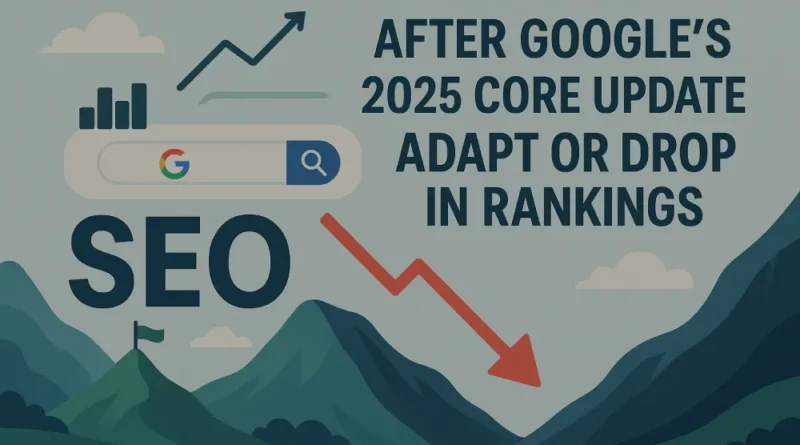SEO After Google’s 2025 Core Update: Adapt or Drop in Rankings
The May 2025 Google algorithm update has significantly reshaped the SEO landscape, emphasizing content quality, authenticity, and user-centric strategies. Here’s an overview of the key changes and how to adapt:
Key Changes in Google's May 2025 Algorithm
1. Enhanced Content Quality Standards
Google’s latest update intensifies its focus on high-quality, original content. Websites relying on AI-generated or thin content have experienced notable ranking declines. The algorithm now prioritizes content that offers genuine value to users, aligning with Google’s commitment to delivering relevant and trustworthy information.
2. Crackdown on Spam and Low-Quality Practices
The update targets manipulative SEO tactics, including “parasite SEO,” where reputable sites host unrelated or low-quality content to exploit their domain authority. Google’s stricter policies aim to preserve the integrity of search results by penalizing such practices.
3. Introduction of AI-Powered Search Features
Google has rolled out AI Mode, featuring a chatbot-style interface that provides synthesized answers to complex queries. While this enhances user experience, it also reduces click-through rates to traditional web pages, prompting SEO professionals to adapt their strategies accordingly.

SEO Strategies for Success Post-Update
- Prioritize E-E-A-T: Ensure your content demonstrates Experience, Expertise, Authoritativeness, and Trustworthiness. This involves showcasing real authorship, citing credible sources, and providing accurate information.
- Focus on User Intent: Develop content that directly addresses the specific needs and questions of your target audience. Understanding and aligning with user intent enhances relevance and engagement.
- Optimize for AI Features: Structure your content to be easily digestible by AI-powered search features. This includes using clear headings, concise answers, and structured data to increase visibility in AI-generated summaries.
- Maintain Content Freshness: Regularly update existing content to ensure it remains current and valuable. Fresh content signals relevance to search engines and meets evolving user expectations.
Conclusion
The May 2025 algorithm update underscores Google’s dedication to delivering high-quality, user-focused content. By emphasizing authenticity, aligning with user intent, and adapting to AI-driven search features, SEO professionals can navigate these changes effectively and maintain strong search rankings.
Disclaimer
The information presented in this blog is derived from publicly available sources for general use, including any cited references. While we strive to mention credible sources whenever possible, Web Development Agency in Mumbai
does not guarantee the accuracy of the information provided in any way. This article is intended solely for general informational purposes. It should be understood that it does not constitute legal advice and does not aim to serve as such. If any individual(s) make decisions based on the information in this article without verifying the facts, we explicitly reject any liability that may arise as a result. We recommend that readers seek separate guidance regarding any specific information provided here.

